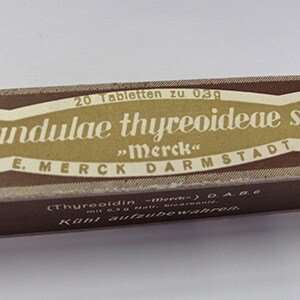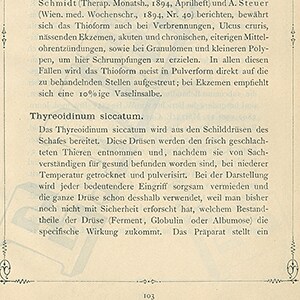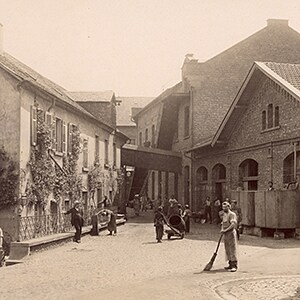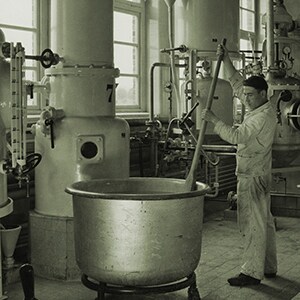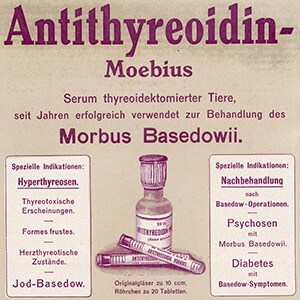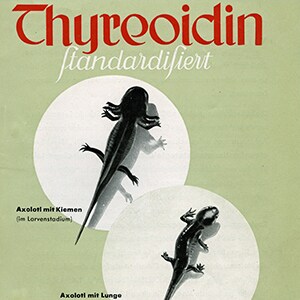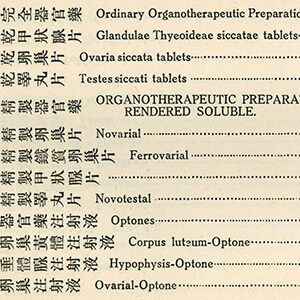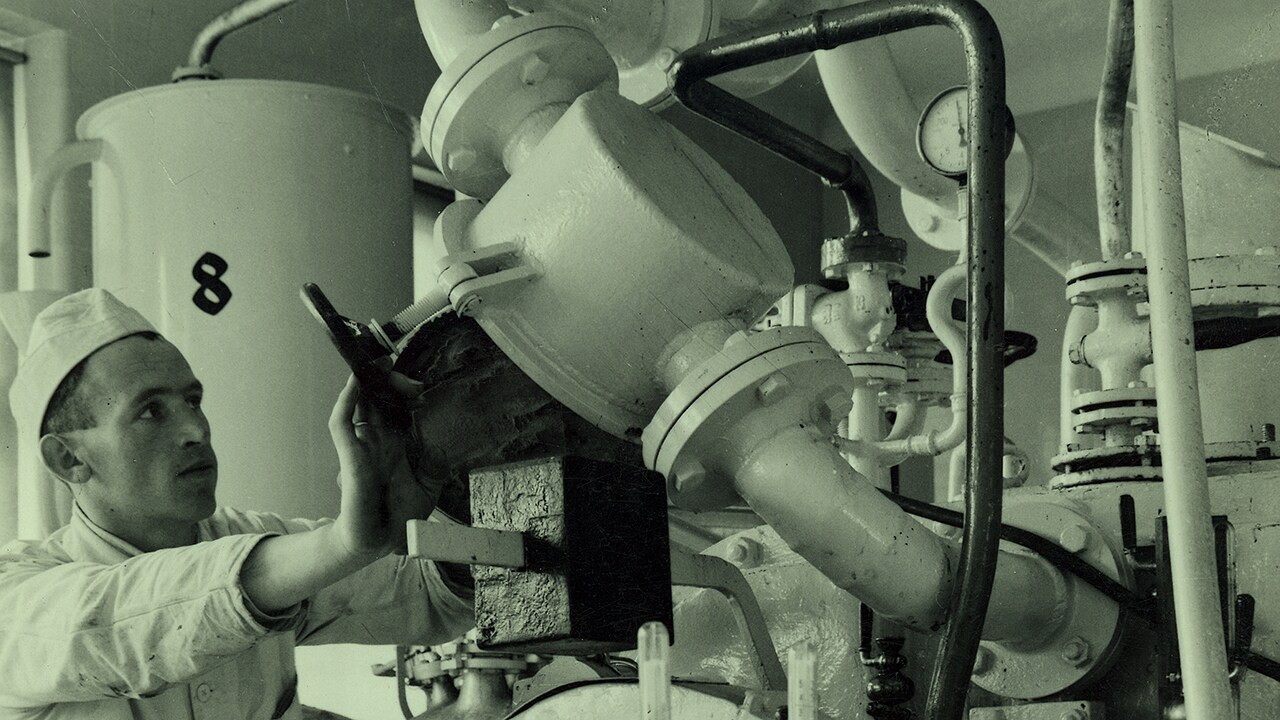
»Hansemann’s perception that the essence of organ therapy lies in the fact that altruistic relations […] exist between the cells in the body […] is merely a further expansion of the foregoing view.«
Hermann Schelenz, Organtherapie im Laufe der Jahrtausende, 1910
In the last quarter of the 19th century, a Swiss surgeon swears by radical removal of the thyroid in severe cases of goiter. Physical and mental limitations were potential consequences of treatment. Preserving residual glandular tissue in the patient is an initial attempt at a solution.
In the early 1890s, research scientists all over Europe advocate internal administration of animal thyroid. Suggested delivery forms include extracts and »material delivered raw with some seasoning or cooked in various ways«. The age of modern organ therapy has dawned.
The notion of curing human illnesses with animal organs has been around since antiquity, but the question regarding the mechanism of action is now being reframed in an entirely new way. »E. Merck’s Annual Pharmacy Reviews« dating from 1896 points out the revolutionary nature of current developments: Although the customary use of organs may have been successful in many cases, it was »not rational«. Moreover, the »compound-bound« mechanism of action has already been noted: »Not the organs as such should be used, but their secretions […]. Regrettably, our knowledge […] is very limited to date.«
The first company thyroid product comes onto the market in 1894. Freshly slaughtered sheep thyroid is dried, powdered and also made into tablets. With »Thyreoidinum siccatum«, the company hopes to overcome patients’ reluctance to use other dosage forms.
The company applies the latest scientific insights to develop a product. The highest standards of quality, both with respect to the raw material and its processing, are essential to the product’s efficacy. A dedicated manufacturing facility is built and »every conceivable precaution is observed« to stop the ever so precarious starting material from becoming infected.
Research in the following decades is driven by two phenomena: a growing understanding of thyroid gland function, and standardization and checking active ingredient quantity.
The research scientists are struck by the variety of symptoms that respond to thyroid medicinal products but do not know the precise mechanism of action. This makes it impossible to isolate specifically effective substances in a chemically pure state and determine their therapeutic value »with clinical accuracy«. Standardization is by the biological route. Only in the late 1960s and early 1970s do medicines based on purified thyroid hormone preparations usher in a new era in thyroid disease management.
The first »E. Merck« [Darmstadt, Germany] thyroid products enter the market in 1894. The packaging is from a later date. »E. Merck’s [Darmstadt, Germany] Annual Pharmacy Reviews«, 1894, states that the whole thyroid is used for the purpose, since it was not known for sure »to which component […] the specific effect is attributable.« Production records are available since 1895.
The importance of the organ products business grows. A new building is erected in 1935 in the southern part of the company premises on Frankfurter Strasse. The employee newspaper comments: »The size and features of this production unit indicate that the products manufactured here must be of significant importance.«
New products are also launched on the basis of collaboration with external scientists. A clear theoretical underpinning of the clear therapeutic success is still lacking, however. The active ingredient is standardized in the 1930s, one contributor being the axolotl. Organ products are a success, both nationally and internationally.

